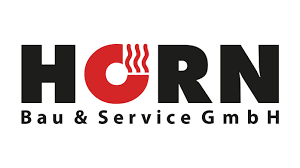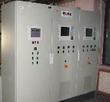|
|








|
 |
Aktualny stan wiedzy firmy HORN® opiera się na ponad 135 latach doświadczenia, co umożliwia firmie dostarczanie produktów najwyższej jakości do produkcji butelek na napoje, pojemników spożywczych, szklanek, szyb okiennych, szkła samochodowego, rurek szklanych, włókien szklanych lub szkła specjalnego. |
| Ilość pracowników : |
120 |
| Rok założenia : |
1894 |
Rodzaj działalności : |
Manufacturer |
 HORN researches forehearth firing HORN researches forehearth firing
The firing system in a forehearth is a critical and very important tool for glass conditioning and thermal homogeneity. Targeted and controlled firing results in higher efficiency and flexibility in forehearths.
The firing system in a forehearth is a critical and very important tool for glass conditioning and thermal homogeneity. Targeted and controlled firing results in higher efficiency and flexibility in forehearths.
HORN not only theoretically develops its knowledge in this area but also through practical research.
One of these practical research studies was carried out directly in HORN's workshop. The effects of different burner types on the thermal homogeneity of glass and the heating efficiency as well as the
adverse effect of the flames on the refractory material were tested on a forehearth model.
In order to simulate a real forehearth, the same cross-section dimension of a typical forehearth and the same material was used. The forehearth model was heated to normal operating temperature. In addition, the model was filled with molten glass to the same depth as in a real forehearth.
Under these conditions, the heat exchange between the superstructure, the glass surface and the combustion products could be examined realistically. The temperature of the glass at five different points, the temperature of the super-structure, the burner blocks, and inside the combustion chamber, as well as other important parameters were recorded precisely and continuously. The analysis of these test results increased HORN’s know-how regarding forehearth firing.
Once again, HORN's research and development department has taken a positive step forward regarding forehearth development.
Aktualny stan wiedzy firmy HORN® opiera się na ponad 135 latach doświadczenia, co umożliwia firmie dostarczanie produktów najwyższej jakości do produkcji butelek na napoje, pojemników spożywczych, szklanek, szyb okiennych, szkła samochodowego, rurek szklanych, włókien szklanych lub szkła specjalnego.
Dzięki swoim zagranicznym spółkom zależnym w Chinach, Malezji, Indiach, Chorwacji, na Ukrainie, w Czechach i Brazylii, HORN® zapewnia krótki czas reakcji i bliskość dla swoich klientów na całym świecie. Mimo to, 90% produktów jest eksportowanych z głównej siedziby HORN® w Plössbergu (położonego w Górnym Palatynacie Bawarskim, Niemcy) do ponad 75 krajów na całym świecie.
Firma HORN® zawsze oferuje swoim klientom pełne wsparcie i pomocną dłoń. Dzięki bardzo wysokiemu poziomowi integracji pionowej wszystkich produktów, HORN® oferuje rozwiązania szyte na miarę i jednocześnie wkracza w nowe obszary, np. w budowę własnych wanien cynowych i powiązanego sprzętu.
HORN® produkuje szeroką gamę produktów we własnych warsztatach w Plössbergu, takich jak:
Ogrzewanie gazowe, tlenowe i olejowe ciężkie do pieców do topienia
Systemy elektryczne wspomagające
Dozowniki surowców
Palniki
Mieszadła
Wanny cynowe i sprzęt do wanien cynowych
Tweels
Skrzynki na żużel
Jednostki odwracające gazy odpadowe
Szafy sterownicze i systemy SCADA
HORN® jest dostawcą usług do realizacji wizji i projektów klientów w dziedzinie szkła i wspiera swoich klientów od pierwszego szkicu przez proces wdrażania aż po stałe wsparcie produkcji na miejscu.

| Cold top batch charger Cold top batch charger
Application:
For electrical furnaces with Cold Top for even batch distribution on the surface of the glass.
Construction and Configuration:
- Type: HVFE mit a charging capacity from 4 - 50 tpd
- base frame with longitudinal and transverse waggon
- vibrating chute
- dust extraction unit
- PLC - Control
Extras:
- As an option, the control parameter can be set via operator panel
Features / Benefits:
- even batch distribution
- even movement of the driving axles due to the direct drive
- adaption of the batch charging direction
| 
| Cross Fired Furnace Regenerative cross fired furnaces are used for production capacities of above 220 t/d or because of space reasons also for smaller furnaces. The long flame and wide crown span are reasons that End Fired Furnaces above 450 t/d are not built any more, they are often replaced by the Cross Fired Furnaces at this range. Regenerators, burner neck and burners are located there laterally.
The doghouse is situated at the front and over the whole width of the furnace. As alternative doghouse can be designed as two small charging front building.
The burner necks are in step design and are subject to energy consumption in the different melting zones designed in different sizes. By special devices in the regenerators or in the waste gas channels the air / waste gas flow can be controlled in each burner neck.
As at the End Fired Furnace all internals like barrier wall, deep refining area, melting boosting, bubbling system or throat boosting can be installed in the Cross Fired Furnace as well.
Advantages
- For high capacity furnaces up to 750 t/d (at float furnace up to 1000 t/d)
- Temperature profile along the length of the furnace can be adjusted easily
- At suitable designed superstructure a re-circulation of the flame is possible
| 
| Heat Treating Furnaces and equipment Heat Treating Furnaces and equipment, annealing_lehrs. | 
| Measurement and Controlequipment The technological condition of a glass melting plant´s control system determines the plant´s financial feasibility as well as the quality of the glass produced. A side from the most modern visualisation software used to support the inspection of the melting process, HORN has developed products such as the OPTIBEAM; the internationally appoied laser glass level control system.
HORN offers functional units for miscellaneous requirements, primarily:
MCC (Motor Control Cabinet) and -electronic within the low voltage range
Measurement and control technology
Control aund automation technology
Process supervision technology
To control and govern the complex technological glass melting process, HORN has developed a four-level operational concept. The aim is to display technical parameters in the clearest and most user-friendly way and at the same time achieve the highest possible safety level.
Process supervision and visualisation
PLC - levels with independent operating units
Back-up hardware levels
Manual operation level
HORN furnaces are fitted with individual measurement and control equipment, the main elements of which govern and control the following operating parameters:
Glass levels
Furnace pressure
Temperature
Measurement of the Oxygen and CO2 in the furnace atmosphere (Optional)
Furnace camera
| |
|
|

